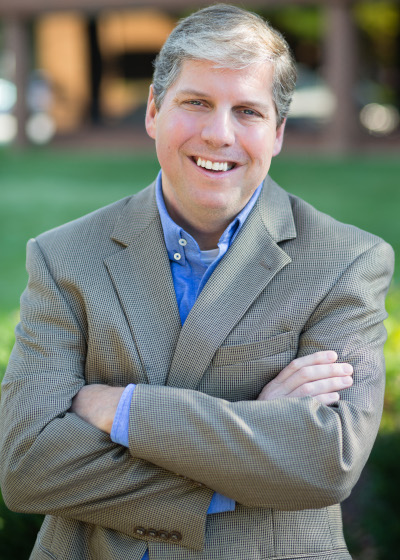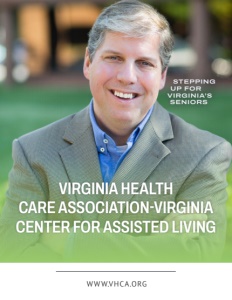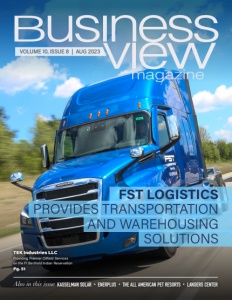Virginia Health Care Association – Virginia Center for Assisted Living (VHCA-VCAL)
Stepping Up for Virginia’s Seniors
Putting the needs of its members first; VHCA-VCAL focuses on the issues that matter
No one wants to hear about COVID anymore, but it had a profound impact on the long term care (LTC) industry. It put nursing facilities and assisted living communities in the spotlight as the vulnerable seniors in their care were so susceptible to the virus. This attention highlighted the chronic underfunding of the Medicaid program, which in Virginia pays for the care of six in ten nursing facility residents. As we move beyond the three-year public health emergency, it is critical to maintain a focus on this essential segment of the health care continuum by investing in the services provided to seniors and the staff who provide their care.
With over 360 members, the Virginia Health Care Association – Virginia Center for Assisted Living (VHCA-VCAL) is Virginia’s largest trade association representing nursing facilities and assisted living facilities. VHCA-VCAL members operate 97 percent of the Medicaid-certified nursing facility beds in Virginia. The association works with policymakers and state government as a strategic partner to facilitate an environment where quality nursing centers and assisted living communities can thrive. VHCA-VCAL also advocates for appropriate funding so providers can meet the needs of their residents.
In the early days of the pandemic when much focus was on hospitals, VHCA-VCAL was vocal in its messaging and outreach to policymakers explaining that LTC facilities were ground zero for the pandemic and could not be overlooked in efforts to combat the virus. As facilities struggled with increased costs to pay for supplies and staffing, VHCA-VCAL worked to obtain additional Medicaid funding. Fortunately, Virginia’s lawmakers understood the gravity of the situation and authorized significant funding by providing a $20 per resident per day Medicaid add-on. This funding was the lifeline that allowed nursing facilities to stabilize their operations during the height of the pandemic. Other states that did not support their LTC facilities in the same way have seen numbers, threatening access to care for seniors.
Rethinking How Medicaid Pays for LTC
VHCA-VCAL called for incorporating this add-on into Medicaid base rates to permanently improve the payment methodology and address historic underfunding. This took root when the General Assembly directed VHCA-VCAL, the state Medicaid agency, and other stakeholders to develop an incentive-based program that encourages facilities to meet goals for enhanced quality of care.

Keith Hare
What resulted was the Medicaid Nursing Facility Value-Based Purchasing (VBP) Program, launched on July 1, 2022. It substituted the Medicaid add-on amount with incentive payments for those nursing facilities that met or exceeded performance and/or improvement thresholds in six key areas, including two staffing metrics, and measures related to hospitalizations, emergency department visits, pressure ulcers, and urinary tract infections.
Legislators then decided to use the VBP Program in setting a minimum staffing requirement of 3.08 total nursing hours per resident day. By first incentivizing increased staffing through VBP, Virginia bucked the trend of imposing a staffing standard based only on punitive measures, recognizing that inadequate Medicaid funding has significantly contributed to the staffing levels everyone wants to improve.
VHCA-VCAL supported the standard because it aligned with the staffing metric in the VBP Program and is tied to Medicaid funding going forward. As staffing is the largest component of nursing facility care, the costs of higher staffing must be built into the Medicaid rates.
The legislation included exceptions to sanctions if a facility is facing established circumstances affecting the ability to hire staff or has demonstrated a concerted effort to recruit and retain direct care staff. This is in contrast to an expected federal mandate for staffing minimums that is unlikely to account for existing staffing shortages or that states like Virginia may have designed unique approaches that provide a greater chance of successful outcomes.
For the VBP Program and the staffing standard to ultimately be successful, Virginia needs to sustain the funding needed and find ways to grow the nursing workforce, which was devastated during the pandemic.
 Recovery of the Long Term Care Workforce Is Ongoing
Recovery of the Long Term Care Workforce Is Ongoing
Staffing in Virginia’s nursing homes and residential-care facilities plummeted in the pandemic when over 11,600 workers were lost over two years. The latest data shows facilities are still down by almost 4,500 employees, or 5.7 percent of the workforce. Meanwhile other health care providers have mostly rebounded to pre-pandemic levels.
Facilities cite competition with other employers, lack of applicants or no qualified applicants as the top reasons for vacancies. Nearly every facility in Virginia is actively recruiting and paying higher wages and bonuses. However, Virginia is not producing enough nurses to keep up with the demand for them. Training programs are too small, and more RNs are needed to serve as instructors. Few people want to take on this role as instructor salaries do not match what an RN can make working as a clinician. Rebuilding the long term care workforce will not occur overnight, but time is of the essence to ensure we are encouraging individuals to join this rewarding profession.
It is also necessary to realize that as the acuity of residents has increased, more staff are needed to provide care. Providers were already having difficulty hiring before the pandemic. Even if the sector recovers its pandemic related staffing losses, facilities still want to hire more caregivers to meet the higher acuity needs of residents.
Increasing wages is a common suggestion from those outside the sector who are unaware that providers already have and continue to. Hourly wages for employed clinical nursing staff (CNAs, LPNs, and RNs) have increased by a combined nearly 36 percent since 2018. From 2021 to 2022 alone, employed clinical wages increased an average of 15.5 percent. Combined with contract nurse staffing, total payroll is up over 47 percent since 2018. While providers have had no choice but to use contract staff to fill gaps in staffing coverage (a 443 percent increase in hours used since 2018), it is a significantly less effective care model with a tremendously higher cost.
Solutions Are in Sight
It will take shared effort and several state budget cycles to make lasting improvements that benefit Virginia’s seniors. First, Virginia needs to continue its efforts to reverse the effects of historic Medicaid underfunding. Recent gains are at risk if rates do not keep up with inflation or if state budget cuts are ordered. Addressing Medicaid underfunding is also necessary for efforts to address healthcare workforce shortages. Without boosting Medicaid rates, facilities cannot provide competitive wages and benefits that keep caregivers in the sector.
Next, Virginia needs a concerted effort to create as many CNAs and LPNs as it can. Long term care facilities want to serve as clinical training sites and to hire these caregivers. Facilities are also willing to partner with other provider types to support the nursing workforce. All have a vested interest in finding ways to build the workforce to ensure care is coordinated for patients.
Virginia is making strides but must keep the momentum going to ensure there is a robust network of stable, high-quality long term care providers across the state. This is especially urgent as the oldest Baby Boomers are only a few years away from needing LTC. They need the assurance that they can access the care they need and deserve.
AT A GLANCE
Virginia Health Care Association-Virginia Center for Assisted Living
WHAT: Virginia’s largest trade association representing nursing facilities and assisted living facilities
WHERE: Richmond, Virginia, USA
Website: https://www.vhca.org/


